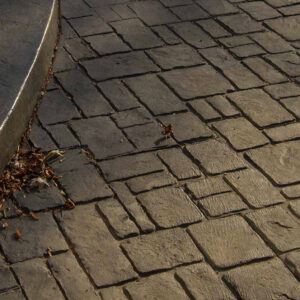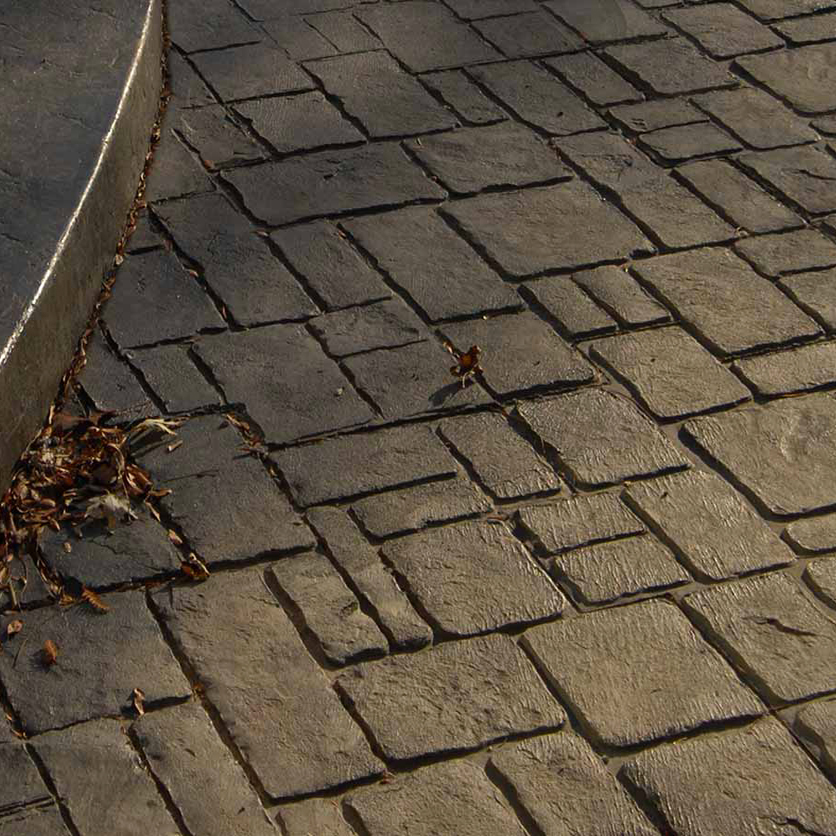Concrete contractors use special stamps to imitate the look of brick, stone, tile, or wood. Staining the concrete can also give it a colorful appearance that complements your home.

Although Stamped Concrete Colorado Springs are less expensive than authentic materials, it may require resealing every two to five years. It also isn’t a DIY project because it requires specialized equipment.
Compared to pavers and other paving materials, stamped concrete is less expensive to install and maintain. It can also be repaired more easily than those materials since the slabs are made from a much stronger material. However, the cost of stamped concrete can vary widely depending on how complex the design is and what colors are used. Colored concrete is more expensive than plain concrete, and the costs will increase as the pigments get darker.
The price of stamped concrete will also depend on how large the patio or driveway is, as well as its shape and location. A larger patio or driveway will require more work and will therefore be more costly. It is important to hire a professional to ensure that the concrete is properly installed and sealed. This will help protect the concrete from weather damage and keep it looking its best for years to come.
Stamped concrete can be used for a variety of applications, including patios, walkways, driveways, pool decking, and more. It can be colored to match other paving materials, such as stone or wood, and can include patterns to mimic other types of paving, such as bricks or cobblestones. Stamped concrete is durable and long-lasting, and it can add value to your home.
Whether you choose stamped or plain concrete, it’s important to find a contractor who has experience and is licensed and insured. The process of mixing and pouring concrete requires expertise, and if not done correctly, the finished product can be uneven and unsightly. A licensed and experienced contractor will be able to provide you with a quality job at an affordable rate.
It is important to note that stamped concrete will not last forever, and it will need to be resealed periodically. It is also not resistant to freeze-thaw cycles, and it can be damaged by de-icing salts in the winter. In addition, the concrete can crack if it’s not properly sealed or supported.
Stamped concrete is easy to maintain and can be swept or washed with a garden hose on a regular basis. It should be resealed every three to five years to protect it from moisture and other environmental factors. It is also recommended to use a slip-resistant coating on the surface to prevent injuries and accidents.
Durability
Concrete is a sturdy material that lasts for a long time when properly maintained. However, it can crack like any other material if not handled correctly. That’s why it is important to hire a professional concrete contractor to handle your stamped concrete project. A good concrete contractor will pour your concrete in small batches and use a screed to level it out. They will also add rebar and other reinforcements to increase the strength of your concrete. This will prevent cracking over time. Additionally, they will use a water-resistant sealant to protect the surface from moisture damage and staining.
Stamped concrete requires far less maintenance than natural stone, tile, or brick. It’s important to clean your stamped concrete regularly to remove any oil spills, chemicals, or dirt. If you leave these substances on the concrete for a long period of time, they can cause it to break down faster. It’s also a good idea to reseal your concrete every two or three years to keep it looking fresh.
Although stamped concrete is more durable than pavers, it can still crack over time. It’s also prone to moisture damage and expansion. It’s essential to have a well-designed drainage system in place to minimize these issues. Additionally, stamped concrete is a very slick material when it gets wet. This can lead to people falling and hurting themselves. That’s why it’s important to avoid installing stamped concrete around a pool.
The biggest drawback to stamped concrete is that it’s a one-time investment. If you make a mistake during the installation process, there’s no going back. You can’t simply rip it up and start over, like you can with pavers. That’s why it’s so important to hire a reputable concrete contractor who will ensure that your stamped concrete is installed correctly the first time. That way, you can enjoy your new patio for a long time to come. A reputable contractor will also stand by their work and provide you with a warranty.
Appearance
Concrete has become a popular material for patios, pool decks, driveways, and more. It’s affordable, durable, and can be customized to match the style of your home. But how does it compare to pavers and slabs in terms of appearance? Here’s a look at the pros and cons of each.
The advantage of stamped concrete is that it can be made to resemble many different types of materials, including wood, slate, stone, and brick. This is achieved by using a stamping mat that’s designed to create the desired texture in wet concrete. The process can be used to create a variety of patterns, and it’s even possible to add large medallions or other custom accents to the concrete.
A good concrete contractor will know the best way to achieve the desired look, and they’ll also be able to advise you on the type of finish that will work best for your project. For example, a high-quality sealant will help protect the concrete from staining and fading over time. It’s important to choose a contractor who has experience with this type of project, and be sure to ask for references.
Another benefit of stamped concrete is that it’s more cost-effective than other materials like pavers and asphalt. It’s also more environmentally friendly and requires less maintenance. In addition, stamped concrete is resistant to extreme temperatures and will last much longer than other types of paving materials.
Stamped concrete is also a great choice for outdoor areas because it’s less likely to crack or crumble. It’s also easy to clean and maintain, and it can withstand heavy foot traffic without losing its color or texture.
While poured concrete is usually gray, it can be colored before it sets by adding color additives to the mix. The process of coloring concrete is called “staining.” Staining gives it a more natural-looking color and can make it appear lighter or darker than the surrounding area. It’s a simple and inexpensive way to change the appearance of your concrete, and it can be done after the pour or once it has cured.
Maintenance
When sealed properly, stamped concrete can last for many years. However, like any other surface, it will need to be cleaned and resealed from time to time. When this is done, the life span and final appearance of the surface will increase dramatically.
Staining is a common problem for stamped concrete, especially in areas that experience high traffic. While a good-quality sealer will inhibit stains, it’s still important to remove them as soon as they occur. A non-abrasive mild cleanser such as laundry detergent, dish soap, or a concrete cleaner that is specifically formulated for this type of application will work well to remove most stains. If a stronger solution is needed, a rust remover, chemical stripper, or organic spot treatment may be necessary.
It’s a good idea to sweep or dust mop the area weekly and wash it as needed with a garden hose or pressure washer. Avoid using too much pressure, as it can damage the surface of the concrete and the grout lines. A specialized chemical, such as an alkaline degreaser, may also be necessary for more stubborn grease or oil stains. Be sure to follow all product instructions carefully, as improper use of this type of cleaner can damage or discolor the concrete.
Another common issue is the deterioration of the sealant. It’s recommended to reseal the concrete every two years, or more often if your outdoor space experiences high traffic. A good contractor will have a selection of high-quality sealers that they can recommend.
Other common maintenance issues include crack repair, patching, and recoloring. These are generally easy fixes, but it’s always best to call a professional for this type of work.
As with all other types of outdoor surfaces, it’s a good idea to avoid using salts or deicing chemicals on the concrete. These can damage or discolor the concrete, and they will also harm your vehicle’s wheels or undercarriage. If you must use them, be sure to rinse the concrete off with a hose or pressure washer afterward. This will help reduce the amount of salt that erodes the concrete.
